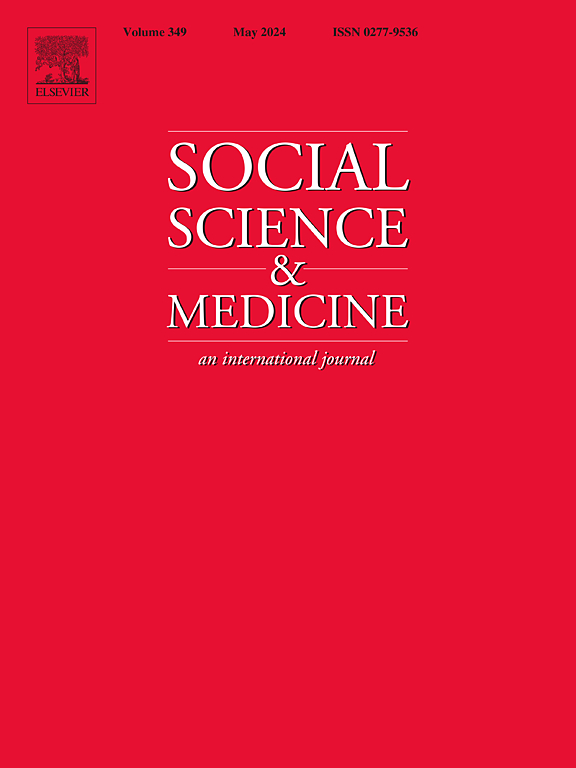Support or stress? How attachment and relationship dynamics associate with acute psychosocial stress in the presence of the romantic partner
IF 5
2区 医学
Q1 PUBLIC, ENVIRONMENTAL & OCCUPATIONAL HEALTH
引用次数: 0
Abstract
Stress is a wide-spread phenomenon and associated with various detrimental health effects. A significant resource for stress buffering is social support. How social support is perceived, however, depends on a multitude of individual and interindividual factors. This study aimed to explore the stress-reducing properties of relationship-inherent variables. We investigated the association of attachment style, relationship quality and dyadic coping, with subjective and physiological stress responses to a psychosocial laboratory stressor in romantic partners. Seventy-nine couples participated (85 recruited, six dropouts), with one partner ("target") undergoing the Trier Social Stress Test and the other ("observer") observing the situation. Besides examining the role of targets' relationship variables, we also assessed the link between observers' relationship variables and targets' stress reactivity. We found that both targets' and observers' insecure-avoidant attachment scores were associated with targets' stress reactivity. In detail, while targets' insecure-avoidant attachment scores were negatively associated with targets' subjective stress experience, observers' insecure-avoidant attachment scores were positively associated with targets' heart rate reactivity. Further, higher insecure-avoidant attachment scores were linked to lower psychoendocrine covariance, i.e., a lower accordance between self-reported and cortisol stress responding. On the one hand, these data may suggest that under stress, insecure-avoidantly attached individuals suppress their experience of stress to preserve a sense of independence as part of their deactivating attachment strategy. The presence of an insecure-avoidantly attached partner during a stressful experience, on the other hand, seems to be a stressor rather than a source of support. Long-term, an insecure-avoidantly attached partner may negatively impact an individual's stress-related health and wellbeing.
支持还是压力?依恋和关系动态如何与恋人在场时的急性心理社会压力相关联
压力是一种普遍存在的现象,与各种有害健康的影响有关。社会支持是缓解压力的一个重要资源。然而,如何感知社会支持取决于许多个人和个人之间的因素。本研究旨在探讨关系固有变量的减压特性。我们调查了依恋类型、关系质量和二元应对与浪漫伴侣对心理社会实验室压力源的主观和生理应激反应的关系。79对夫妇参与其中(85对被招募,6对退出),其中一方(“目标”)接受特里尔社会压力测试,另一方(“观察者”)观察情况。除了考察目标关系变量的作用外,我们还评估了观察者关系变量与目标应激反应之间的联系。我们发现被试和观察者的不安全回避依恋得分都与被试的应激反应有关。实验对象的不安全回避依恋得分与实验对象的主观应激体验呈负相关,而观察对象的不安全回避依恋得分与实验对象的心率反应性呈正相关。此外,较高的不安全回避依恋得分与较低的心理内分泌协方差有关,即自我报告与皮质醇应激反应之间的一致性较低。一方面,这些数据可能表明,在压力下,不安全回避型依恋个体会抑制他们的压力体验,以保持独立感,这是他们停用依恋策略的一部分。另一方面,在有压力的经历中,一个不安全的逃避型伴侣的存在,似乎是一个压力源,而不是支持的来源。长期而言,不安全回避型伴侣可能会对个人的压力相关健康和幸福产生负面影响。
本文章由计算机程序翻译,如有差异,请以英文原文为准。
求助全文
约1分钟内获得全文
求助全文
来源期刊

Social Science & Medicine
PUBLIC, ENVIRONMENTAL & OCCUPATIONAL HEALTH-
CiteScore
9.10
自引率
5.60%
发文量
762
审稿时长
38 days
期刊介绍:
Social Science & Medicine provides an international and interdisciplinary forum for the dissemination of social science research on health. We publish original research articles (both empirical and theoretical), reviews, position papers and commentaries on health issues, to inform current research, policy and practice in all areas of common interest to social scientists, health practitioners, and policy makers. The journal publishes material relevant to any aspect of health from a wide range of social science disciplines (anthropology, economics, epidemiology, geography, policy, psychology, and sociology), and material relevant to the social sciences from any of the professions concerned with physical and mental health, health care, clinical practice, and health policy and organization. We encourage material which is of general interest to an international readership.
 求助内容:
求助内容: 应助结果提醒方式:
应助结果提醒方式:


